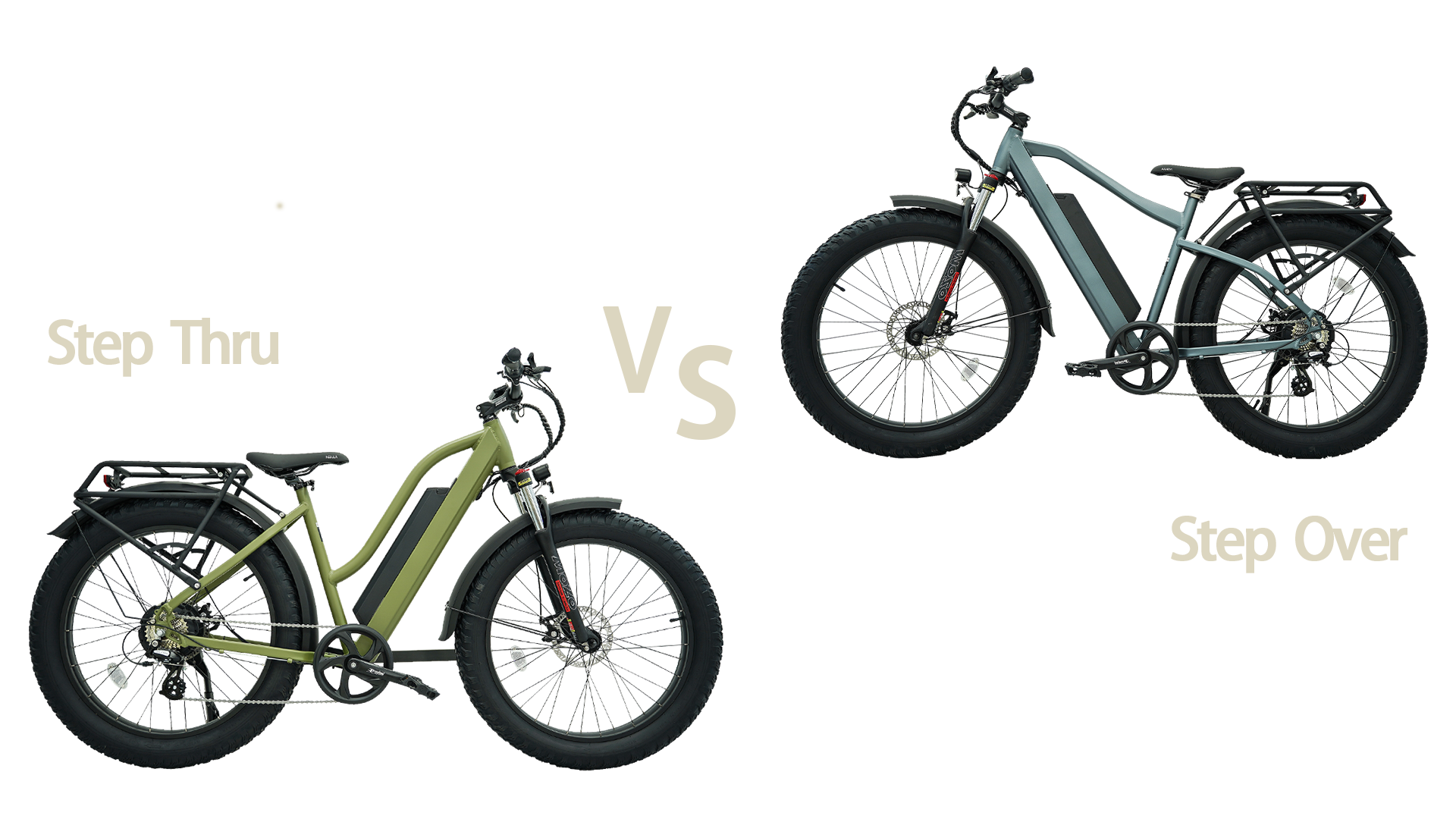When choosing between a step-through and a step-over electric bike (e-bike), several factors should be considered. Both types of e-bikes have their own advantages and disadvantages, and the best choice depends on your individual needs, preferences, and intended use. Here's a detailed comparison to help you decide:
Step-Through E-Bikes

Design:
- Features a low or absent top tube, making it easy to mount and dismount.
- Often associated with commuter, cruiser, or city e-bikes.
Advantages:
- Accessibility: Easier for riders with limited mobility, those who wear skirts or dresses, or anyone who finds lifting their leg over a high top tube challenging.
- Convenience: Ideal for frequent stops and starts, making them popular for city commuting and running errands.
- Comfort: Generally designed for an upright riding position, which can be more comfortable for casual rides.
- Ease of Use: The step-through design is user-friendly for people of all ages and fitness levels.
Disadvantages:
- Stability: May feel less stable at higher speeds or on rough terrain due to lower frame rigidity.
- Weight: Often heavier because additional material is needed to maintain frame strength.
- Performance: Less aerodynamic and not ideal for high-speed or performance-focused riding.
Step-Over E-Bikes

Design:
- Features a high top tube, forming a traditional diamond frame.
- Common in road e-bikes, mountain e-bikes, and hybrid e-bikes.
Advantages:
- Strength and Stability: The traditional diamond frame provides excellent strength and stability, suitable for high-speed and rough-terrain riding.
- Performance: Typically lighter and more aerodynamic, contributing to better performance for sports and long-distance rides.
- Versatility: Suitable for a wider range of riding styles, from commuting to off-road adventures.
- Battery and Motor Placement: Often designed to optimize battery and motor placement for better weight distribution and performance.
Disadvantages:
- Accessibility: Can be challenging for riders with limited mobility or flexibility and for those who need to mount and dismount frequently.
- Comfort: Often designed for a more aggressive riding position, which can be less comfortable for casual riders.
- Clothing: Less convenient for riders wearing skirts, dresses, or other clothing that might get caught on the high top tube.
Choosing the Right E-Bike
Consider the following factors when choosing between a step-through and step-over e-bike:
- Riding Style: For casual, city, or commuter riding with frequent stops, a step-through e-bike might be more convenient. For high-speed, performance, or off-road riding, a step-over e-bike is generally better.
- Mobility and Flexibility: If you have any mobility or flexibility issues, a step-through e-bike provides easier mounting and dismounting.
- Comfort vs. Performance: Decide whether comfort or performance is more important to you. Step-through e-bikes offer more comfort and ease, while step-over e-bikes excel in performance and versatility.
- Terrain: Consider the type of terrain you'll be riding on. Step-through e-bikes are better suited for flat, paved surfaces, while step-over e-bikes can handle a variety of terrains, including rough and uneven surfaces.
- Aesthetic Preferences: Personal preferences in bike design and aesthetics might also influence your choice.
- Battery and Motor: Evaluate the battery range and motor power to ensure they meet your needs, regardless of the frame style.
Conclusion
Ultimately, the best e-bike is the one that fits your needs, feels comfortable, and makes your riding experience enjoyable. Test-riding both types, if possible, can provide a clearer sense of which design suits you best.



Share:
The Best Tire Pressure for Electric Bikes
How to Fix Error 30 on Your Ebike